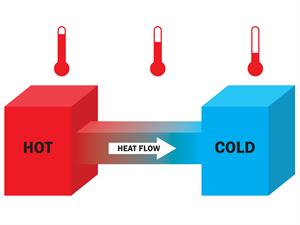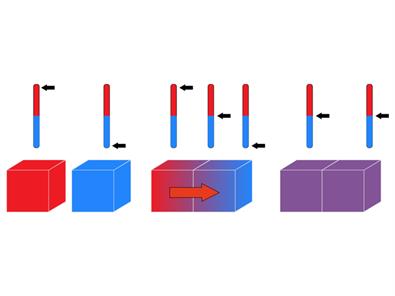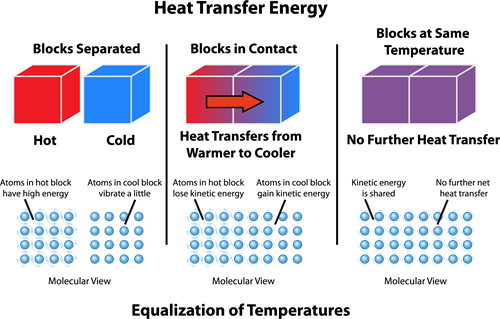PDF chapter test TRY NOW
The flow of heat is the process in which energy (thermal energy) is transferred from one object to another.
Whenever two systems come into contact, one system's energy is transferred to another to attain equilibrium. In this case, heat or thermal energy is transferred. Generally, the direction of flow is determined by the temperature. Here, the heat is transferred from the hotter object to the colder object.

Heat flow from the hotter object to the colder object
What happens when heat is transferred from a hotter object to a colder object?
When two objects come into thermal contact, the hotter object's heat energy is transferred to the colder object, which induces an increase in kinetic energy. Due to this increase in kinetic energy, molecules in the colder object move faster, resulting in an increase in temperature. This process continues until thermal equilibrium is achieved.

Process of heat transfer

Heat transfer energy
The above diagram shows how the heat transfer takes place between two objects. The diagram is divided into three columns.
- The first one shows two objects with different temperatures and are not in contact.
- The second column shows that the two objects are in thermal contact, and heat transfers from a hot object to a cold object. It also indicates that the atoms in the hot body lose their kinetic energy, which is being transferred to the cool body.
- The third column shows that thermal equilibrium is achieved, and there is no transfer of heat hereafter.
Thermal Contact:
Two systems are said to be in thermal contact if they can exchange energy through heat transfer.
Thermal Equilibrium:
Two systems are said to be in thermal equilibrium if there is no transfer of heat between them, and both have the same temperature.
